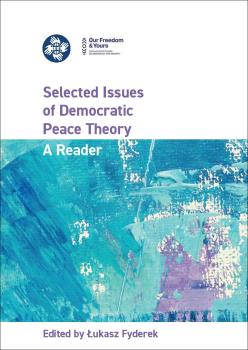Selected Issues of Democratic Peace Theory: A Reader
Keywords:
democratic peace theory, TDP, political scienceSynopsis
The theory of democratic peace confronts us with some of the most interesting questions in contemporary social sciences. The basic thesis that democracies do not fight wars with each other has not been falsified in the course of political events. This makes it possible to treat peace between democracies as one of the few permanent elements in international relations. Empirically observed, the main thesis of the democratic peace theory has yet to be satisfactorily and fully explained. Thus, democratic peace has been one of the enduring elements of international political reality since the beginning of the 20th century, but we still do not know with certainty what mechanisms make democracies not fight each other, and why disputes occurring between them are resolved without the use of large-scale lethal force.
Some of the studies presented or discussed in this volume recognize that a phenomenon that co-occurs with peace between democracies is the greater likelihood of wars between authoritarian states and democracies. This reflection, however, is only a starting point for research on better understanding the decision-making and strategy-setting processes of players involved in international conflicts.
Chapters
-
TABLE OF CONTENTS
-
Introduction .......... 5
-
Democratic Peace: the Theory, Research Agenda and Axis of Debate in International Relations .......... 9
-
Stasis or Decay? Reconciling Covert War and the Democratic Peace .......... 41
-
The Theory of Democratic Peace and Threat Perception .......... 85
-
The Democratic Peace and the Wisdom of Crowds .......... 131
-
It Takes Two: an Explanation for the Democratic Peace .......... 183
-
Identifying the Place of Democratic Norms in Democratic Peace .......... 225





